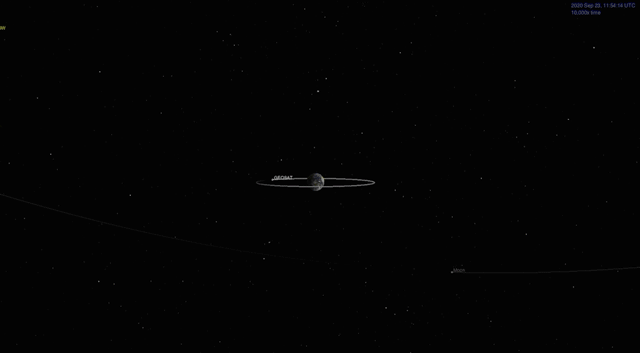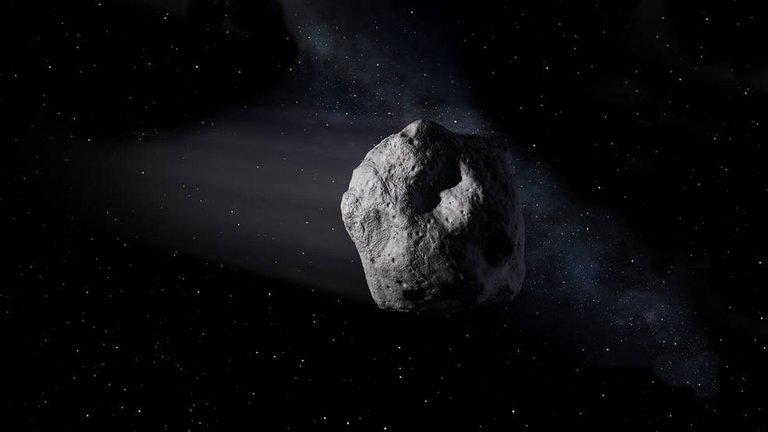This cool Bus-sized Asteroid can be taken as a model to safely witness the past Earth
Hello #Hivers, hope you all are doing good today. Today we are going to have a look at this beautiful asteroid which is telling the story of the past Earth. NASA has recently spotted this beautiful asteroid of which we will be exploring in this article. But before discussing directly about this specific asteroids, let us first discuss some of the basic terms out here for the ease of understanding.

Image credit: NASA/JPL-Caltech (Source: NASA )
Asteroids are little, rough things that rotate around the Sun. Despite the very fact that asteroid orbit the Sun like planets, they're loads littler than planets.
There are bunches of an asteroid in our near solar system. The bulk of them lives in the elemental asteroid belt—an area between the orbits of Mars and Jupiter.
Around 15 to 30 feet wide, the item will make its nearest approach on Sept. 24.
A little close Earth asteroid (or NEA) will quickly visit Earth's neighborhood on Thursday, Sept. 24, zooming past a good ways off of around 13,000 miles (22,000 kilometers) over our planet's surface. The space rock will make its nearby methodology beneath the ring of geostationary satellites orbiting 22,000 miles (36,000 kilometers) away from Earth.
Given its brilliance, researchers gauge that 2020 SW is approximately 15 to 30 feet (5 to 10 meters) wide – or about the size of a little school transport. Even though it's not on an effect directly with Earth, on the off chance that it was, the space rock would very likely separate high in the climate, turning into a brilliant meteor known as a fireball .
After space rock 2020 SW was found on Sept. 18 by the NASA-supported Catalina Sky Survey in Arizona, follow-up perceptions affirmed its orbital direction to high accuracy, precluding any opportunity of effect. CNEOS researchers confirmed that it will make its nearest approach at 4:12 a.m. PDT (7:12 a.m. EDT) on Sept. 24 over the Southeastern Pacific Ocean. After Thursday's nearby methodology, the space rock will proceed with its excursion around the Sun, not getting back to Earth's region until 2041, when it will make a substantially more inaccessible flyby.

Image credit: NASA/JPL-Caltech (Source: NASA )
In 2005, Congress allocated NASA the objective of discovering 90% of the close Earth space rocks that are around 460 feet (140 meters) or bigger in size. These bigger space rocks represent a lot more prominent danger if they somehow happened to effect, and they can be distinguished a lot farther away from Earth since they're basically a lot more brilliant than the little ones. It is imagined that there are more than 100 million little space rocks like 2020 SW, however, they are difficult to find except if they get extremely near Earth.
Thank you all for going through my blog. I hope that you all enjoyed this recent discovery. I write various articles related to science. For more such quality articles to read please follow me @science-popper .
See you people tomorrow. Will be coming up with such interesting contents. Till then take and be safe!!
Thanks for your contribution to the STEMsocial community. Feel free to join us on discord to get to know the rest of us!
Please consider supporting our funding proposal, approving our witness (@stem.witness) or delegating to the @stemsocial account (for some ROI).
Thanks for including @stemsocial as a beneficiary, which gives you stronger support. Using the STEMsocial app could yield even more supporti next time.
Congratulations @science-popper! You have completed the following achievement on the Hive blockchain and have been rewarded with new badge(s) :
You can view your badges on your board and compare yourself to others in the Ranking
If you no longer want to receive notifications, reply to this comment with the word
STOPDo not miss the last post from @hivebuzz: